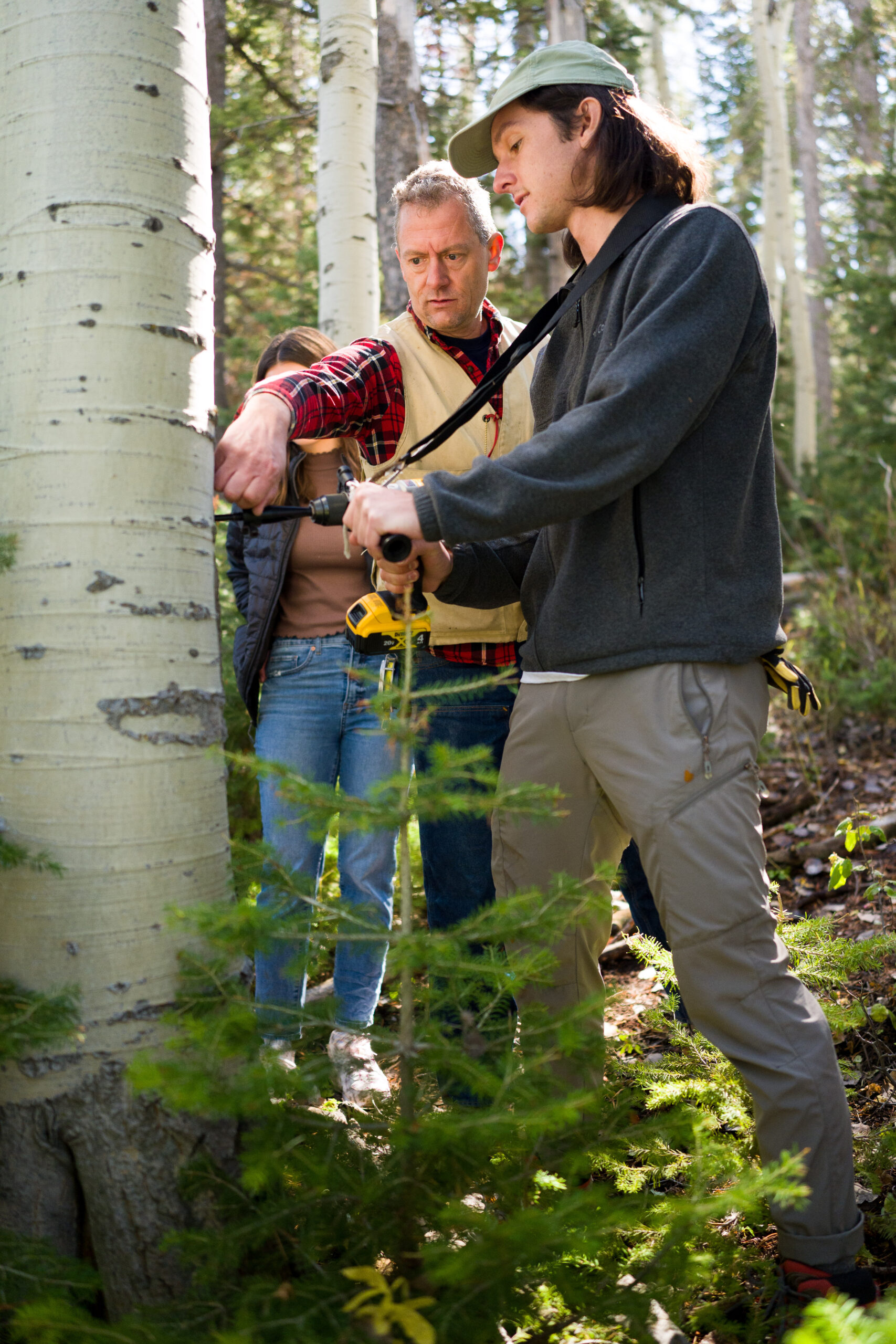What tree rings reveal for climate change
Buried within the tree rings of Utah’s forests lies a hidden history of survival and change — a history that can clue us into the future. At Utah State University, groundbreaking research is underway that could change how we understand forests and their response to climate change.
Researchers from USU’s wildland resources department are pairing historical tree ring data from the T.W. Daniels Experimental Forest in Logan Canyon, formerly known as the School Forest, with modern climate records.
Climate change will impact forests worldwide, either as a benefit or a detriment depending on the forest type.
Associate professor Justin DeRose and dendrochronologist — someone who studies tree rings to learn about the history of trees and climate change — Ryan Jess are leading this project, hoping to gain insight into these effects on forests in the Intermountain West.
“The goal here is to look at how these stands have responded to climate variables over the 20th century to help us understand how they’re going to respond in the future,” DeRose said.
The research required taking samples from a large stand — a distinct forest area that is relatively uniform in various characteristics — of trees in the experimental forest.
“In general, trees are the best journal keepers in nature,” Jess said. “They record everything that happens to them by how much they grow, and that creates a pattern throughout time.”
Tree ring samples were taken from each tree individually using a drill bit to leave the tree unharmed. According to DeRose, this was a huge undertaking.
“It’s somewhat intensive, the research we do,” DeRose said. “It involves installing plots that are large enough to cover the different things that happen in that forest type and taking increment cores — tree rings — from maybe 1,000 or 1,200 trees in a given area,”
Back in the dendrochronology lab, the samples are analyzed to reveal patterns of growth that correspond to climate data. By examining the width, density and chemical composition of each ring, the team can pinpoint how specific trees responded to different environmental stressors.
“We hope to learn whether those variation responses are consistent or change over time as the stand grows,” DeRose said. “That’s one of the ultimate questions we haven’t understood yet.”
Tree rings can describe different conditions depending on location and type. According to the National Centers for Environmental Information, trees that rely heavily on temperature to grow will have narrow rings during cold periods and wider rings for warm periods. Trees that rely more on moisture will have wider rings during rainy periods and narrower rings during dry periods.
“We choose our sites to be generally hot, dry and limited by precipitation,” Jess said. “So where we have rings with large diameter, we can infer that precipitation for that particular calendar year was higher, and the same goes for lower.”
One of the biggest challenges in this research is the complexity of the data. Trees are influenced by a multitude of factors, from soil conditions and competition with other plants to human activities and natural disturbances.
“It’s a massive puzzle, detective work into the past,” Jess said. “We’re in the epicenter of a place that is really interesting for dendrochronology, and so that is what keeps me coming.”
This type of research has been done in other regions, but the work DeRose and Jess are doing is the first in the Intermountain West.
“It’s interesting that this research has gone under, simply because it’s so important,” DeRose said.
The implications of this research extend far beyond Utah. Understanding how forests adapt to climate changes can inform global conservation strategies and help predict how ecosystems worldwide might respond to the increasing challenges posed by global warming.
“This kind of information is crucial for forest management practices,” DeRose said. “It can help land managers make informed decisions about which species to prioritize for conservation and which areas might need more proactive restoration efforts.”
According to DeRose, the work being done by DeRose and Jess is key to maintaining the beauty of the places we call home as Utah and the rest of the world face more extreme weather patterns and the effects of climate change intensify. By understanding the past, they can help secure a healthier future for forests everywhere.
“We have plenty of currently existing forests that we’d like to shepherd into the future, and this research is going to address that,” DeRose said.

